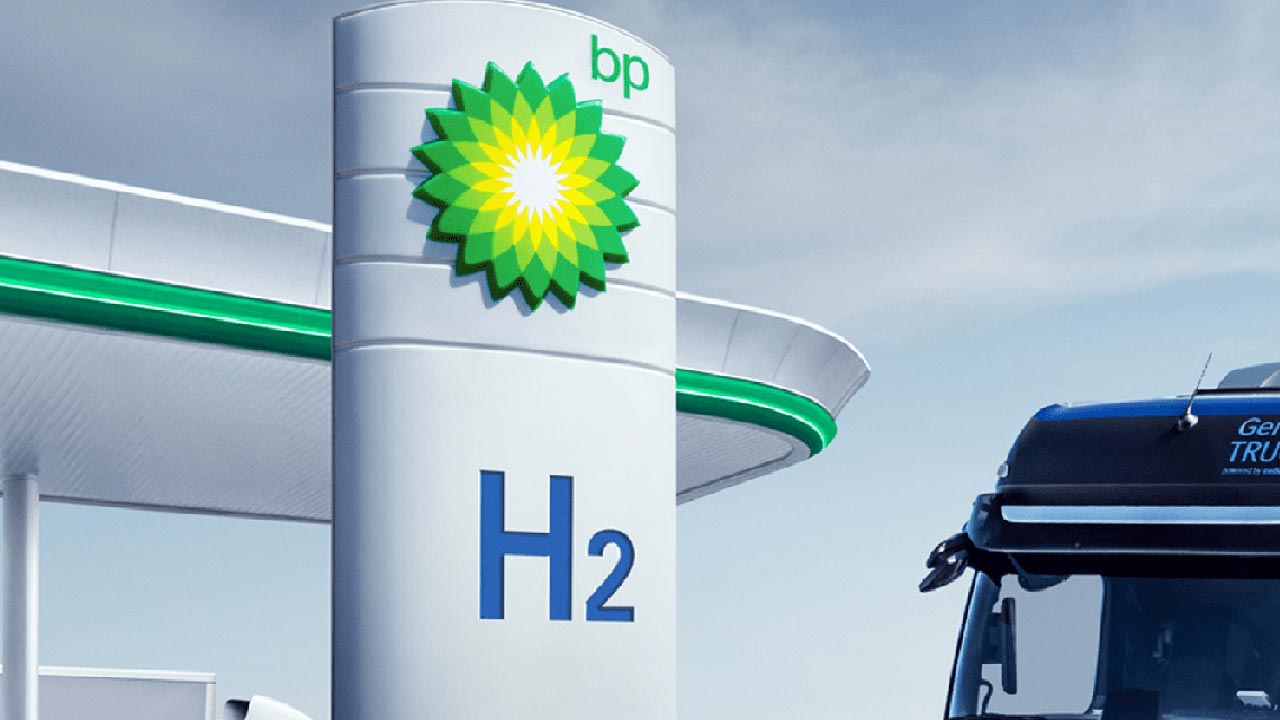Hydrogen will only play a minimal role in the decarbonisation of light vehicles (cars and vans) and the heating of buildings, but will be an important clean fuel for industry, heavy transport, according to an update of BP’s Energy Outlook 2023.
Light vehicles
In “light vehicles” — namely cars and vans — the share of the market using hydrogen as a fuel is precisely zero in 2035 and 2050 under BP’s net-zero scenario, with more than 70% using electricity directly.
In this scenario, more than 20% of the energy share in 2050 for light vehicles will still be from oil products, with small amounts of biofuel and natural gas also being used.
Medium and heavy vehicles
However, the picture is very different for medium and heavy road vehicles (defined as weighing less than and more than 16 metric tonnes).
In the net-zero scenario, hydrogen and H2-derived fuels such as ammonia will be responsible for about 30% of the energy share for such vehicles, with about 50% provided by direct electric solutions (ie, batteries).
“The main alternatives to diesel [for medium and heavy-duty trucks] are electricity and hydrogen,” the report explains.
“The choice between electricity and hydrogen is finely balanced and depends on use case. The use of electricity requires vehicles with large, expensive batteries and time-consuming high-powered charging to refuel. In contrast, hydrogen trucks offer faster refuelling and greater range flexibility, but also require costly fuel cell stacks and gaseous storage.
Aviation
In aviation, BP believes that there will be a “limited role” for planes that use hydrogen directly as a fuel.
“The combination of the slow turnover of the current liquid-fuel based fleet and the range requirements for longer haul flights mean that electric and hydrogen-based solutions play a limited role in the decarbonization of the aviation sector,” the report states.
“Instead, the decarbonization of aviation is driven by increasing role of SAF (sustainable aviation fuel)” — but this will be mainly biofuel, rather than synthetic aviation fuel made from hydrogen and captured CO2.
Nevertheless, it adds: “Hydrogen-derived solutions to create synthetic jet fuel form a growing part of the aviation energy mix over time, especially in [the] Net Zero scenario, as second-generation biojet [fuel] encounters limits in its ability to scale, and improvements in technology and increasing production capacity cause the relative cost of synthetic jet fuel to fall.
In the net-zero scenario, 30% of SAFs will be hydrogen-derived synthetic fuels in 2050.
Shipping
In the shipping industry, hydrogen will not be used directly as a fuel in any of BP’s scenarios, but hydrogen-derived fuels — ammonia and methanol — will be responsible for 55% of the maritime sector’s energy share in 2050 in the net-zero scenario, with smaller roles for biofuels and natural gas.
Overall, the ‘BP Energy Outlook 2023’ includes mainly petrochemical products and only small amounts of biofuel and natural gas. Synthetic fuels are not mentioned.
Source: Hydrogeninsight

